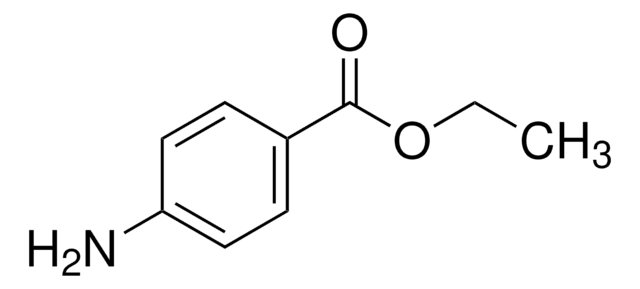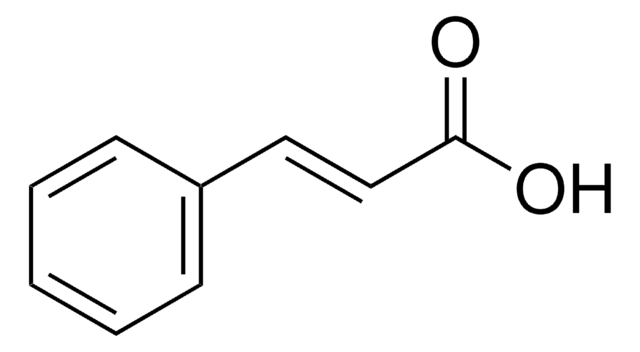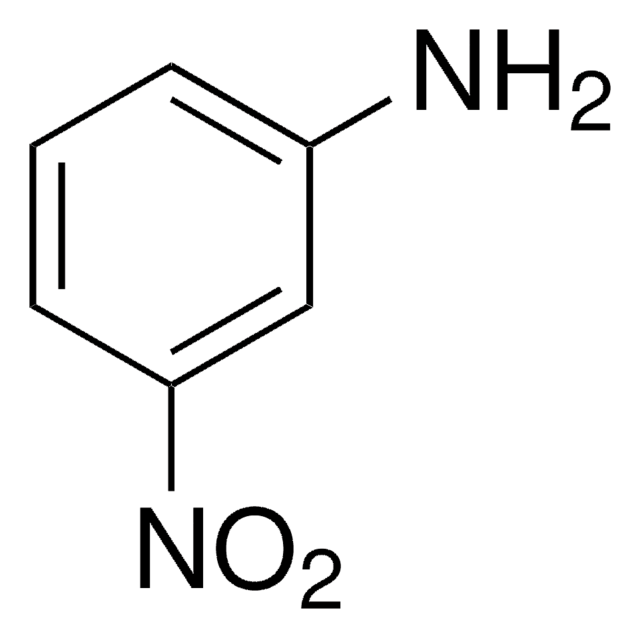76170
Melting point standard 121-123°C
analytical standard
Synonyme(s) :
Acide benzoique, Schmelzpunktstandard 121-123°C
About This Item
Produits recommandés
Qualité
analytical standard
Niveau de qualité
Densité de vapeur
4.21 (vs air)
Pression de vapeur
10 mmHg ( 132 °C)
Température d'inflammation spontanée
1061 °F
Durée de conservation
limited shelf life, expiry date on the label
Point d'ébullition
249 °C (lit.)
Pf
121-123 °C (±0.3°C)
121-125 °C (lit.)
Application(s)
food and beverages
pharmaceutical
Format
neat
Chaîne SMILES
OC(=O)c1ccccc1
InChI
1S/C7H6O2/c8-7(9)6-4-2-1-3-5-6/h1-5H,(H,8,9)
Clé InChI
WPYMKLBDIGXBTP-UHFFFAOYSA-N
Vous recherchez des produits similaires ? Visite Guide de comparaison des produits
Description générale
Application
Caractéristiques et avantages
- Melting point calibration standard traceable to primary standards (LGC, London)
- Grade: Analytical Standard
- Uncertainty of measurement up to ± 0.3 °C
- Provided with certificates of analysis and safety data sheet
- A product of analytical standard grade that meets the QC/QA requirements of melting point analysis
Mention d'avertissement
Danger
Mentions de danger
Conseils de prudence
Classification des risques
Eye Dam. 1 - Skin Irrit. 2 - STOT RE 1 Inhalation
Organes cibles
Lungs
Code de la classe de stockage
6.1C - Combustible acute toxic Cat.3 / toxic compounds or compounds which causing chronic effects
Classe de danger pour l'eau (WGK)
WGK 1
Point d'éclair (°F)
Not applicable
Point d'éclair (°C)
Not applicable
Équipement de protection individuelle
dust mask type N95 (US), Eyeshields, Faceshields, Gloves
Faites votre choix parmi les versions les plus récentes :
Déjà en possession de ce produit ?
Retrouvez la documentation relative aux produits que vous avez récemment achetés dans la Bibliothèque de documents.
Les clients ont également consulté
Articles
HPLC Analysis of Benzoic Acid and Sorbic Acid on Ascentis® Express RP-Amide ("Green" Mobile Phase Conditions)
Separation of Acetaminophen, meets USP testing specifications, 98.0-102.0%, powder; Caffeine, meets USP testing specifications, anhydrous; Benzoic acid, meets USP testing specifications; Aspirin, meets USP testing specifications
Protocoles
Separation of 4-Hydroxybenzoic acid; Acetylsalicylic acid; Benzoic acid; Salicylic acid; Ethyl 4-hydroxybenzoate
HPLC Analysis of Benzoic Acid Derivatives on Ascentis® C18
Notre équipe de scientifiques dispose d'une expérience dans tous les secteurs de la recherche, notamment en sciences de la vie, science des matériaux, synthèse chimique, chromatographie, analyse et dans de nombreux autres domaines..
Contacter notre Service technique










